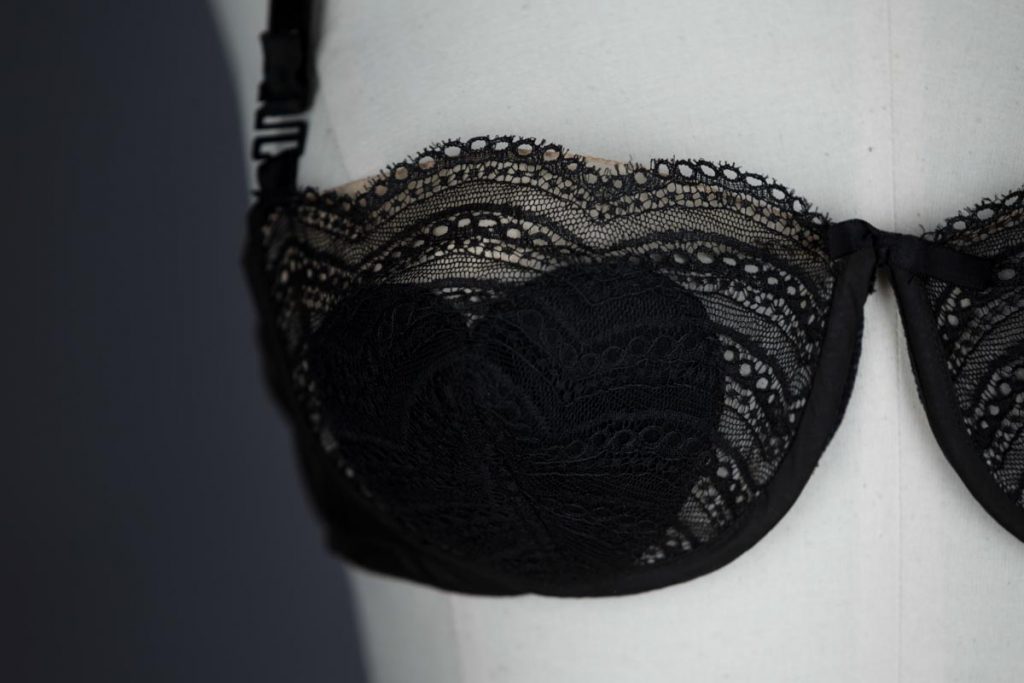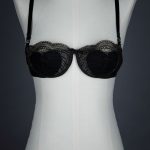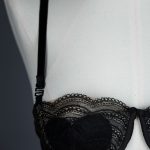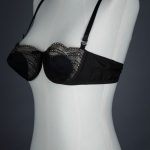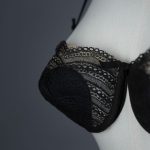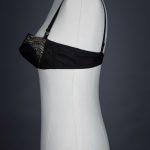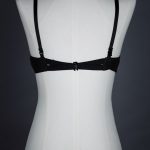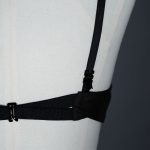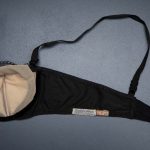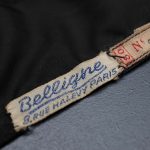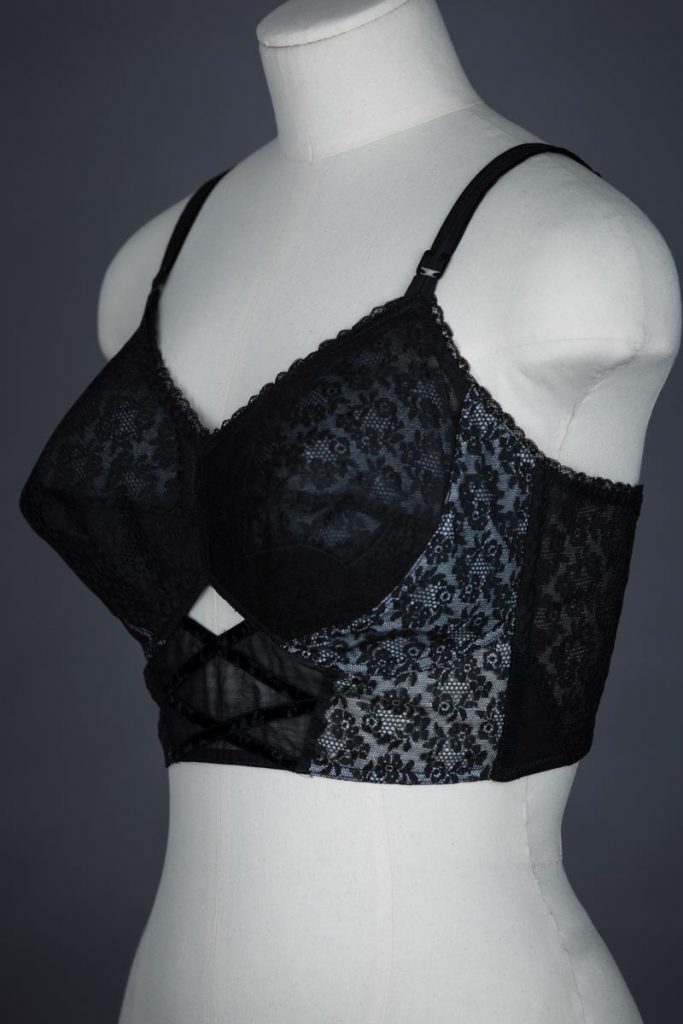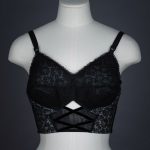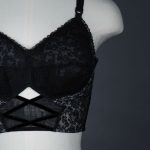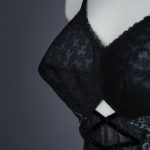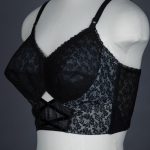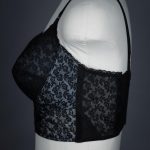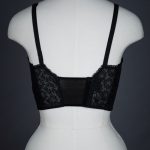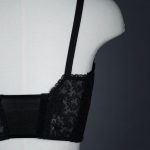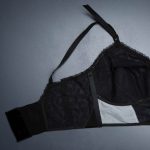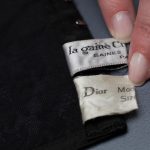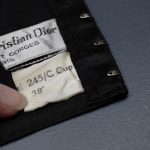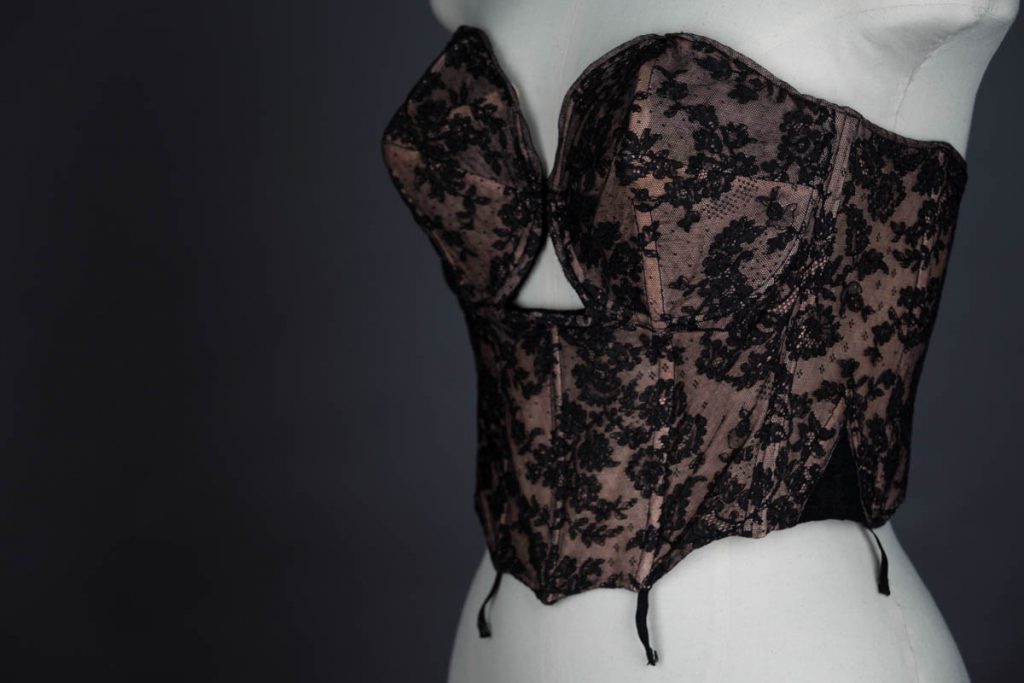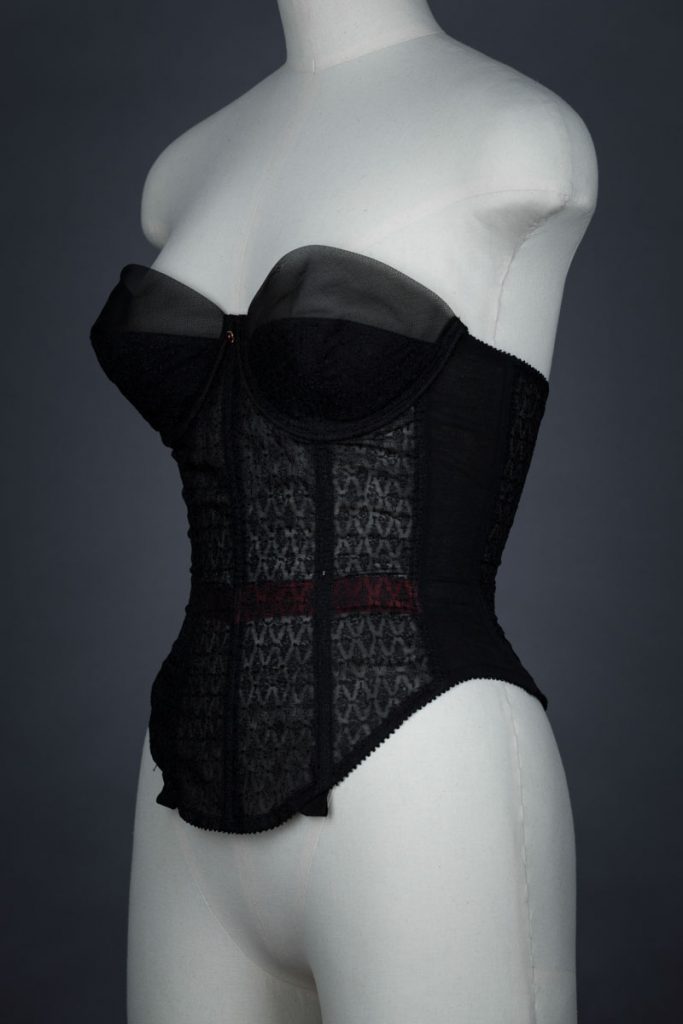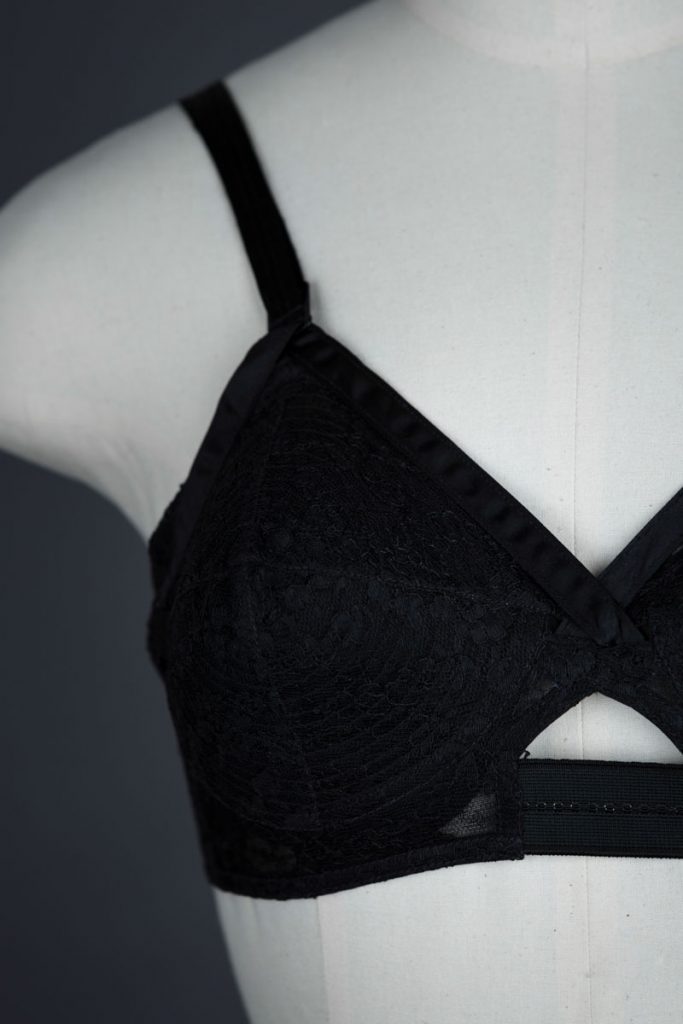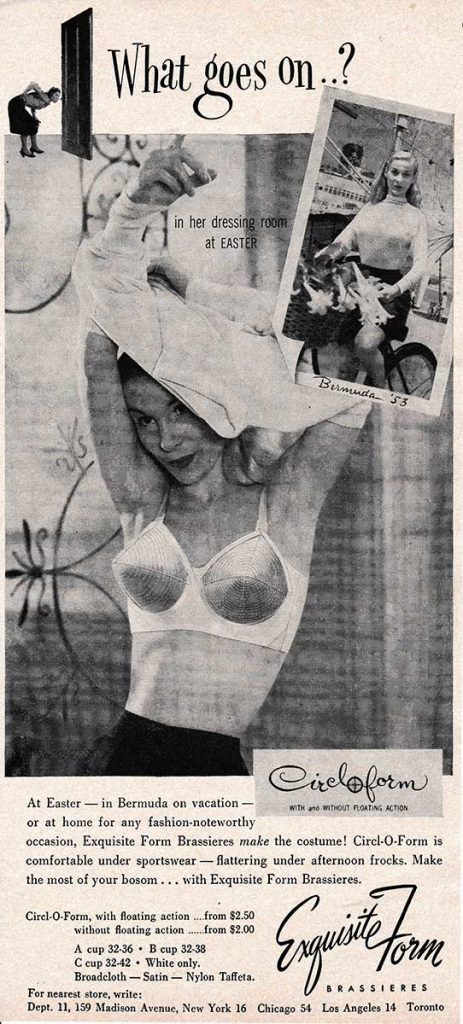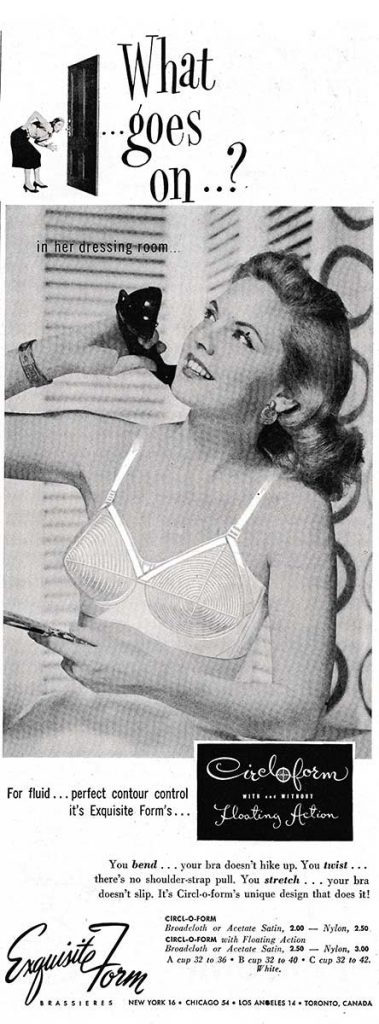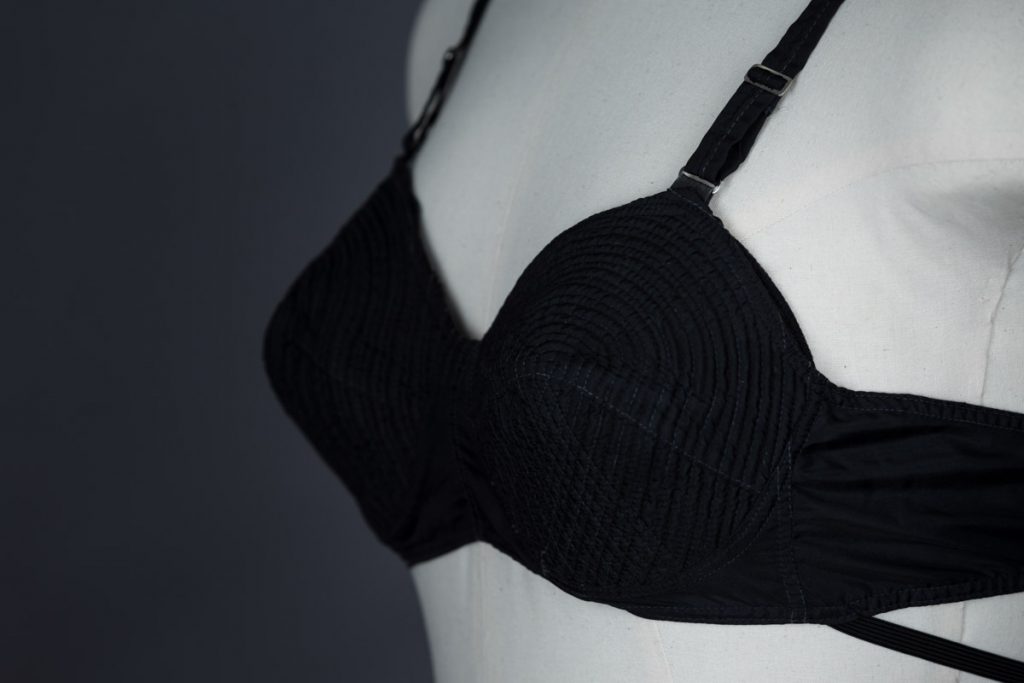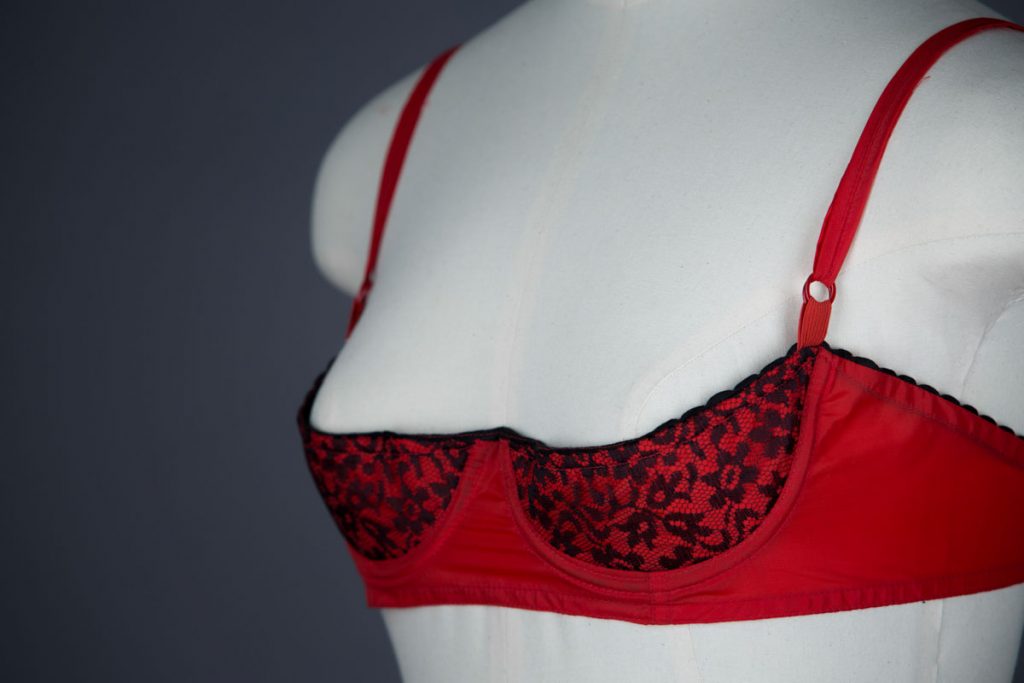After the end of the Second World War, many of the innovative design and textile developments that had started life in the 1930s made a return and hit the mainstream. Underwiring became more common and boning in longline styles was popular, in part due to the impact of Christian Dior’s ‘Corolle’ line in 1947 (more commonly known as the ’New Look’ after after a remark from the editor-in-chief of Harper’s Bazaar, Carmel Snow). The amount of fabric in its full skirts was often reported on – not least because clothing in the UK was restricted by rationing until 1949 and the Utility scheme continued until 1952 – but it was the return to ‘feminine curves’ which influenced underwear construction and design.
Valerie Steele points out that, although Dior’s dresses were boned inside, the vast majority of New Look copies were designed to be worn over foundation garments which cinch the waist and emphasise broad hips and a full uplifted bust. This perky hourglass shape is not achievable to most women without assistance and so many foundation garments offered a solution, with longline styles which nip in the waist or were designed to be worn with cinchers, and structured bras offering added fullness along with uplift.
Padding the breasts, the practice of which was already long established, increased dramatically in the 1950s as the options available to women in the US and the UK were more extensive and technical. This included: padding built into a bra, made from foam rubber, felt or eiderdown; removable pads that slipped inside pockets in the cups; and also separate ‘bust forms’ or ‘falsies’ to be placed inside any brassiere.
